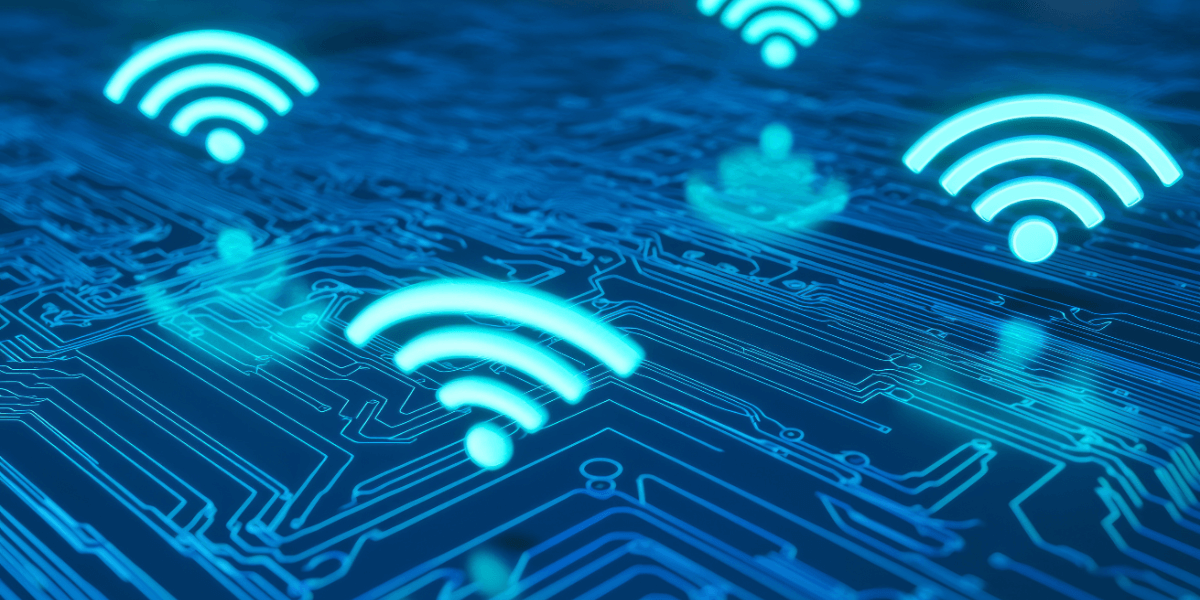Lower your internet bill
61% of people overpay for their internet.
Are you one of them?
Unlock exclusive offers in your area!
Call now
[tel]Enter zip code
1 Star is Poor & 5 Stars is Excellent.
* Required

Written by Caroline Lefelhoc - Pub. Apr 02, 2025 / Updated Mar 31, 2025
Table of Contents
Are you happy with your Internet service?

About the author
Remember the frustration of waiting for videos to buffer? Or that crucial Zoom call that froze at the worst possible moment? Those digital headaches might soon be ancient history.
WiFi 7 has arrived—and it’s not just another incremental update. It’s a game-changing leap that promises to transform your entire digital life. Imagine downloading 4K movies in seconds, experiencing zero lag in online games, and running dozens of smart home devices without a hiccup.
The wireless revolution is here, and it’s faster than anything you’ve experienced before. But is this cutting-edge technology worth the upgrade? And what exactly makes it so special?
Buckle up as we dive into the supercharged world of WiFi 7, where the internet finally keeps pace with your digital ambitions.
WiFi 7 (officially known as IEEE 802.11be) is the seventh generation of wireless technology, following WiFi 6 (launched in 2019) and WiFi 6E (2020). It represents a significant leap forward in wireless connectivity, with dramatic speed, capacity, and reliability improvements.
The WiFi Alliance—a network of over 900 companies that develops and certifies WiFi technology—officially launched its “WiFi 7 Certified" program in January 2024 [1]. This certification ensures that devices meet specific performance and compatibility standards.
While WiFi 7 routers first appeared on the market in 2023, they became more affordable and widespread in 2025. The technology received a major boost when Apple included WiFi 7 support in its iPhone 16 lineup, accelerating mainstream adoption [2].

Incredible new speeds
The most exciting aspect of WiFi 7 is its incredible speed. Let’s put some numbers to it [3]:
To put this in perspective, with WiFi 7’s top speeds, you could download a 4K movie in seconds rather than minutes. These speeds mean virtually non-existent lag for gamers, even when playing the most demanding online games.
However, it’s important to note that these speeds are theoretical maximums. Your actual speeds will depend on several factors, including:
Still, despite these limitations, WiFi 7 delivers substantially faster performance than previous standards.

WiFi 7 isn’t just about raw speed—it introduces several technological innovations that improve the overall wireless experience:
WiFi 7 doubles the channel width from 160 MHz in WiFi 6E to 320 MHz [4]. Think of channels like lanes on a highway—with twice as many lanes, more data can flow simultaneously without congestion.
This wider bandwidth is particularly beneficial in dense environments like apartment buildings or offices, where many networks compete for the same spectrum.
Perhaps the most revolutionary feature of WiFi 7 is Multi-Link Operation. Previous WiFi generations could access multiple frequency bands (2.4 GHz, 5 GHz, 6 GHz), but devices could only connect to one band at a time.
MLO allows devices to connect on two bands simultaneously. This capability delivers three major benefits:
Using our highway analogy again, MLO is like being able to drive on two highways at once, avoiding traffic jams on either route.
WiFi 7 upgrades from 1024-QAM in WiFi 6 to 4096-QAM [4]. While this sounds technical, the technology can pack more data into each transmission, increasing efficiency by approximately 20%.
WiFi 7 is fully backward compatible with previous WiFi standards. This means:
However, to get the full benefits of WiFi 7, you need both a WiFi 7 router and WiFi 7-capable devices.
The technical improvements in WiFi 7 translate to several practical benefits for everyday users:
If you’ve ever experienced slowdowns when multiple people in your household stream videos or play games simultaneously, WiFi 7 offers a solution. Its wider channels and Multi-Link Operation significantly reduce congestion, ensuring everyone gets the bandwidth they need.
This is particularly valuable in:
Latency—the delay between sending and receiving data—matters tremendously for applications like:
Network reliability becomes increasingly crucial as homes fill with more smart devices—from doorbell cameras to thermostats to voice assistants. WiFi 7 easily handles more connected devices, ensuring your smart home operates smoothly even with dozens of devices online simultaneously.
While WiFi 7 doesn’t dramatically increase range compared to WiFi 6, its Multi-Link Operation improves coverage in challenging environments. By simultaneously using different bands, WiFi 7 can better penetrate walls and maintain stronger connections throughout your home.
The big question: Should you rush out to buy WiFi 7 equipment? The answer depends on your specific needs:

WiFi 7 represents the cutting edge of wireless technology today, but the industry never stands still. Here’s what to expect:
As more devices support WiFi 7, we’ll see greater ecosystem benefits. The technology will become standard in mainstream devices over the next 2-3 years.
As with all technology, prices will fall as WiFi 7 becomes more common. By 2026-2027, WiFi 7 equipment should be much more affordable.
WiFi 7’s capabilities will enable new applications we haven’t even imagined yet. Potential areas include:
WiFi 7 represents a significant leap forward in wireless technology, offering substantial speed, reliability, and capacity improvements over previous generations. For power users, smart homes, and anyone who values a seamless connected experience, WiFi 7 delivers meaningful benefits that justify the upgrade.
However, even the most advanced WiFi 7 router is only as good as the internet connection feeding it. To fully experience the lightning-fast speeds and reliability of WiFi 7, you need an internet service provider that can deliver the bandwidth to match.
Ready to unlock WiFi 7’s full potential? Enter your zip code to discover the fastest internet providers in your area.
The question isn’t if you’ll upgrade to WiFi 7, but when. And that “when" could be today.
[1] Wi-Fi.org
[2] 9to5mac.com. “The Entire iPhone 16 Lineup Adds Support for WiFi 7"

About the author
Congratulations, you qualify for deals on internet plans.
Speak with our specialists to access all local discounts and limited time offers in your area.
[tel]61% of people overpay for their internet.
Are you one of them?
Unlock exclusive offers in your area!
Call now
[tel]Enter zip code